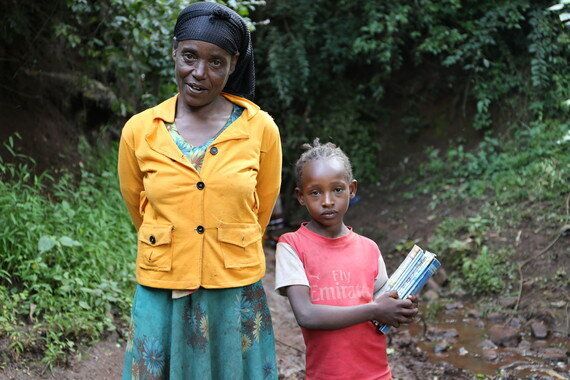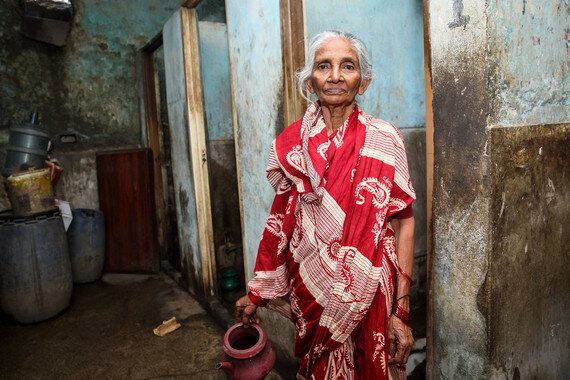It's easy to take a toilet for granted - lock the door, do your business, flush when finished, and forget all about it. But for 2.3 billion people worldwide - almost one in three - such a normal part of daily life is out of reach.
Can you imagine restricting what you eat and drink to avoid needing the toilet until nightfall, when you can go out under the cover of darkness to find somewhere private to relieve yourself, worried about who might see you? Think of how dirty your community would become if everyone was doing the same, day after day. And think of where the children would play, oblivious to the risks posed by such a polluted environment.
Such a situation is most dangerous for women and girls, who are exposed to an increased risk of harassment and attack when finding somewhere to do their business, find it more difficult to cope during their periods, and spend more time ill and caring for others who are sick.
WaterAid's new report, Out of Order: The State of the World's Toilets 2017, revealed Ethiopia as the worst in the world for having the highest percentage of its population without household toilets. Despite also being the country that has made the most progress in reducing open defecation, a staggering 93% have nowhere safe to go to the toilet, holding women and girls back from fulfilling their potential.
Woinshet, from Oromia, Ethiopia, spends a lot of time caring for her daughter, Kisi, 8, who often misses school because of sickness caused by not having clean water or toilets in their community. She almost died last year.
Woishet said: "We don't have a toilet so we go to the bush. Kisi is skinny and fragile because whatever she eats gets lost through diarrhoea and vomiting. The doctor said she has worms because of dirty water and the lack of sanitation. Medical fees are expensive; last time I paid 180 birr, which could have bought enough maize to feed my family for a month."

Woinshet with her daughter Kisi, who is often sick with diarrhoea and vomiting. Credit: WaterAid/ Behailu Shiferaw
Regular bouts of diarrhoea in childhood contribute to malnutrition, which can lead to stunting, causing impaired development and weakened immune systems. This has an impact later on, too; women who are stunted face a higher risk of pregnancy complications and giving birth to a low-weight baby, and the cycle continues.
WaterAid's analysis reveals that India is still the nation with the most people without toilets, with more than 355 million women and girls waiting for access to basic sanitation. This contributes to the appalling death toll from diarrhoeal disease of more than 60,000 children a year.
However, there has been some good progress in improving access to sanitation through the Swachh Bharat (Clean India) Mission, helping put India in the top 10 for progress on reducing open defecation and improving access to basic sanitation.
Progress in other countries in South Asia is encouraging too. Cambodia has emerged from decades of conflict to become one of Asia's fastest growing economies. It comes second for progress in reducing open defecation as well as improving access to basic sanitation.
Bangladesh has almost eradicated open defecation in cities completely by investing heavily in shared latrines used by more than one family, particularly in fast-growing slums. One-fifth of the population now has access to this limited sanitation service, an important stepping stone to better health and dignity.
However the country still ranks in the top five countries for having the highest number of people without household toilets, with more than 85 million people still lacking basic facilities.

Potemma, 70, from Dhaka, Bangladesh, says her community toilets are dirty, inaccessible and lack privacy. As a result, diarrhoea is common. WaterAid and Andrex are working together to renovate the toilet blocks. Credit: WaterAid/ GMB Akash/ Panos.
If the world is going to come anywhere close to achieving toilets for everyone everywhere, there must be a substantial increase in political commitment, and concrete actions globally. In 2015, the world pledged to ensure everyone everywhere has safe water and toilets by 2030 - a deadline that requires a step change in approach because the rate of progress to date will not be enough.
Governments must invest more money, spending it efficiently, while paying particular attention to the needs of women and girls. The provision of toilets also needs to be taken seriously by every sector - extraordinary as it may seem, around one third of schools and one fifth of healthcare facilities do not have decent toilets. We need to work together to make sure every school, health centre, workplace and public space has toilets that are safe for all women and girls, no matter their physical ability.
Ensuring decent toilets for every woman and girl will result in a ripple of positive effects on their health, education, gender equality, and life opportunities making whole communities and countries better off, and changing lives for good.
